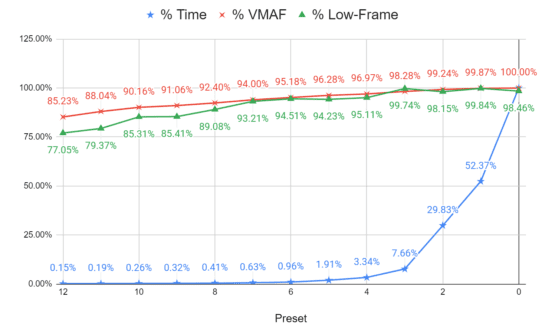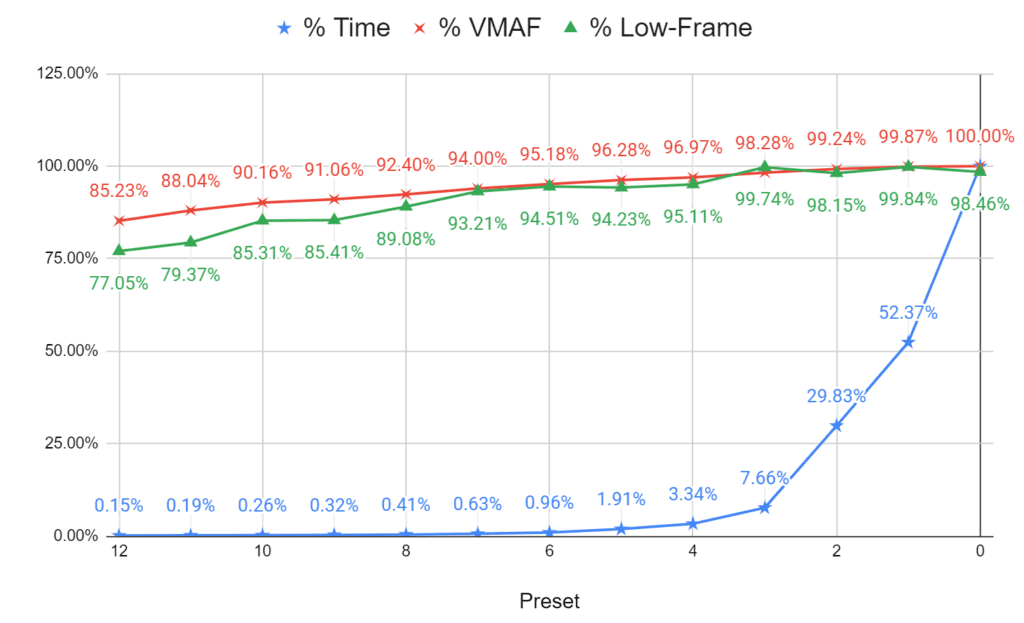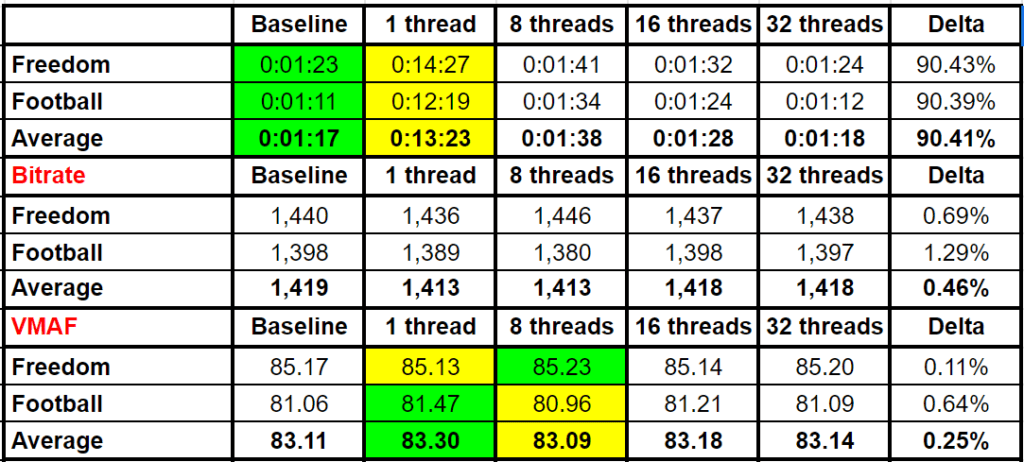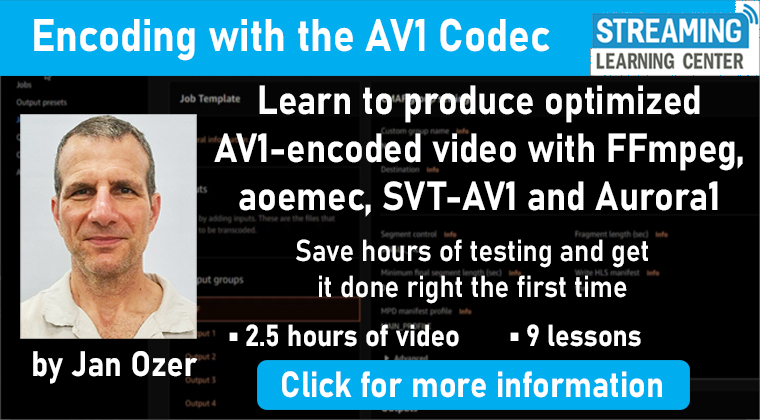I’ve been testing SVT-AV1 1.0 for a presentation that I’m giving on open-source AV1 encoding alternatives at Streaming Media East on May 24, 2022. The results have been impressive; two-pass VBR encoding is working well, and the codec offers a great range of presets, with several much faster than real-time. In contrast, FFmpeg’s libaom-AV1 has no presets even close to real-time.
The figure below shows the time, and quality tradeoffs for all 13 presets; presets 9 and lower are faster than real-time for a single 1080p encode on a 40-core workstation. The chart presents time, overall VMAF, and Low-Frame VMAF, a measure of transient quality, as percentages of the maximum. So, at preset 4, you achieve 96.97% of overall VMAF quality, 95.11% of low frame quality in 3.34% of the maximum encoding time. You have to increase encoding time by ~30x to produce 100% of the quality.
SVT-AV1 also does a nice job scaling to use multiple CPUs without impacting quality. You see this in the table below. Encoding with a single thread delivers the best VMAF quality (in 13:23 minutes average time for the two ten-second test files), while 32-threads drops encoding time by 90% but only drops VMAF quality by .16. In contrast, FFmpeg/libaom-AV1 shows no performance improvement after deploying eight threads.
Interestingly, if you’re encoding on Amazon instances, the least expensive option still appears to be deploying multiple eight-core instances, as shown in the table below (see pricing here).

Why is an eight-core AWS instance the most economical approach? Because, after the jump from 1 core to 8 cores, the AWS cost for multiple-core instances increases faster than the increase in encoding time. You can see this in the chart below.
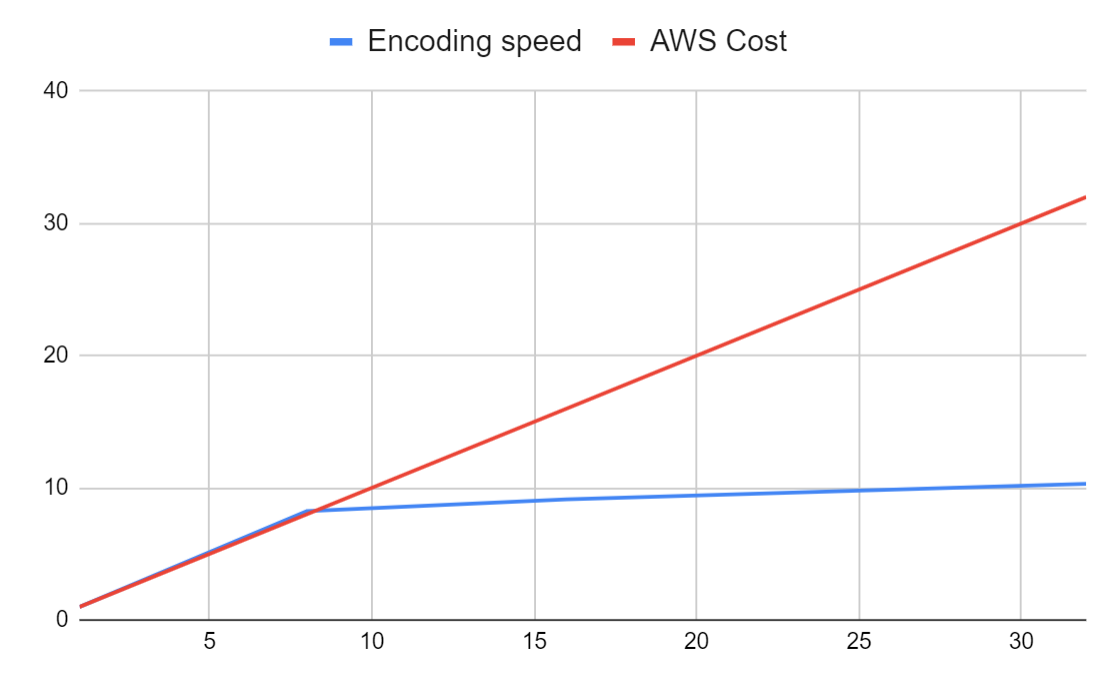
Unless I missed something, which is entirely possible after spending the last few days with my head buried in encoding scripts. If so, please get in touch at janozer@gmail.com and let me know what I got wrong.
Anyway, at the Streaming Media East session entitled, Producing AV1 with Open-Source Alternatives, I’ll present additional findings, including:
- The optimal command strings for SVT-AV1 and FFmpeg
- Quality and performance comparisons between the two codecs
- The optimal preset for FFmpeg and the same production analysis as shown above.
If you can still get to Boston on the 24th, ping me at janozer@gmail.com, and I’ll send you a coupon code for a pretty hefty discount. Otherwise, look for these materials to be incorporated into my course Encoding with the AV1 codec.
 Streaming Learning Center Where Streaming Professionals Learn to Excel
Streaming Learning Center Where Streaming Professionals Learn to Excel

